The origin of smart city-digital earth. In January 1998, the then US Vice President Al Gore first proposed the concept of "digital earth" in a speech. Gore pointed out: We need a "digital earth", that is, a virtual earth with multi-resolution and three-dimensional visual representation embedded in massive geographic data based on earth coordinates. "Digital city" is an important part of "digital earth" and a concrete embodiment of "digital earth" in cities. The development of "Digital Earth" has experienced three stages of digitization, informationization and intelligence. Digitization is the initial stage, but the data has not been effectively classified and managed, and it cannot be called information. Information theory refers to meaningful content in data as information. In the information stage, data can be effectively classified, stored and managed, and become effective resources. With the emergence and application of new interconnection technologies such as sensor networks, urban informatization is developing in the direction of intelligence.
The evolution of human society from the "physical age" to the "physical age" and then to the "intellectual age" is a general trend of escalating civilization. When production tools develop from agricultural machinery to industrial equipment, information equipment, and intelligent equipment, the social form transitions from agricultural society to industrial society, information society, and network society. Cities will also move from agricultural towns, industrial cities, and digital cities to smart cities. Therefore, smart cities have become an inevitable direction of urban development.
At the end of 2008, IBM launched a "smart earth" development strategy to lead the digital city to a smart city. On January 28, 2009, in response to the financial crisis, Obama held a round table meeting with American business leaders. IBM CEO Peng Mingsheng proposed the concept of "smart earth" to US President Barack Obama. The strategic definition is roughly: embedding and equipping sensors into various objects such as power grids, railways, buildings, dams, oil and gas pipelines, etc. to form a connection between objects and objects, and then integrating them through supercomputers and cloud computing The fusion of the physical world. Obama responded by investing economic stimulus funds in emerging technologies such as broadband networks. So this concept quickly heated up and became the long-term development strategy of the United States.
Smart city = digital city + Internet of Things + cloud computing. Professor Li Deren, an academician of the Chinese Academy of Sciences and the Chinese Academy of Engineering, wrote an article to define smart cities. He believes that the connotation of smart cities is the fusion of the three concepts of digital city, Internet of Things and cloud computing. The concept of a smart city is to equip sensors to various objects in urban life to form the Internet of Things, and to realize the integration of the Internet of Things through supercomputers and cloud computing, thereby achieving the integration of digital cities and urban systems. Smart city is a visual and measurable intelligent city management and operation established on the basis of the city's comprehensive digitalization, including the city's information and data infrastructure, and the establishment of a networked city information management platform and comprehensive decision support platform on this basis.
Smart transportation is an important component of a smart city and the best way to solve traffic problems
Transportation is the artery of economic development, and intelligent transportation is an important component of a smart city
Smart cities currently include smart transportation, smart security, smart energy, smart education, smart medical care, smart government affairs and other parts. In the future, they will continue to expand into all aspects of urban life. At present, the construction of "smart cities" in the world is in full swing. The areas covered by "smart cities" cover all aspects of urban life, and have gradually involved various systems of urban operation and management, such as transportation, security, electricity, government management, Emergency, medical, education, etc. When the goals of the smart city were split and implemented, it was implemented as a subdivision of relatively large concepts such as smart healthcare, smart production, smart transportation, and smart government. For urban construction, traffic comes first. Transportation is the artery of economic development, and smart transportation is an important part of smart city construction.
The acceleration of urbanization has led to increasingly sudden traffic problems
With the rapid development of social economy and technology, the level of urbanization is getting higher and higher, and the number of motor vehicles is increasing rapidly. Problems such as traffic congestion, traffic accident rescue, traffic management, environmental pollution, and energy shortage have become common problems faced by countries around the world. Both developed and developing countries are suffering from these problems without exception. Under this general background, the transportation infrastructure, transportation vehicles and transportation participants are systematically considered, and information technology, data communication transmission technology, electronic sensing technology, satellite navigation and positioning technology, control technology, computer technology and computer technology are fully utilized. The integration and application of a number of high-tech technologies such as traffic engineering have made the interaction between people, vehicles, and roads appear in new ways. This way of solving traffic problems is the intelligent transportation system.
Intelligent Transportation System (ITS) refers to the effective integration of advanced information technology, data communication transmission technology, electronic sensing technology, satellite navigation and positioning technology, electronic control technology and computer processing technology for the entire transportation management System, and a comprehensive, real-time, accurate and efficient comprehensive transportation and management system established in a wide range and functioning in all directions. Its purpose is to make people, vehicles, and roads cooperate closely to achieve harmony and unity, exert synergies, and greatly improve transportation efficiency, ensure traffic safety, improve transportation environment, and increase energy efficiency. "People" here refers to all people related to the transportation system, including traffic managers, operators and participants; "vehicles" include vehicles of various modes of transportation; "roads" include passages of various modes of transportation, route. "Intelligence" is the most fundamental feature that distinguishes ITS from traditional transportation systems.
The development of smart transportation is the development trend of intelligent government affairs and transportation informatization
There are two ways to solve the above traffic problems: construction and sparseness. "Construction" refers to investment in road hardware such as highways, urban rail transit, and intercity transportation facilities, as well as the construction of management facilities for intelligent solutions, such as smart transportation, to alleviate traffic pressure. "Sparse" refers to giving full play to the technical advantages and synergy effects of intelligent transportation, combining various high-tech technologies and products, and improving the efficiency of the transportation system. In the past, the traditional solution was to increase investment in infrastructure construction and vigorously develop road construction. Due to the limitation of government fiscal expenditures and the limitation of urban space, the development space of the law has gradually reduced, resulting in the recent implementation of the “restricted purchase†and “restricted license†policies of automobiles in Beijing, Guangzhou and other cities in the hope of “forbidden†Means to alleviate urban traffic pressure. But this practice of curbing people's rigid needs has been criticized.
Experts also called for "blocking" to be better than "sparse". The development of smart transportation is the best way to improve transportation efficiency and solve problems such as traffic congestion and traffic accidents. Judging from the actual application effects in various countries, the development of intelligent transportation systems can indeed improve transportation efficiency, effectively alleviate traffic pressure, and reduce traffic accident rates, thereby protecting the environment and saving energy.
The Internet of Vehicles is a new trend in the development of smart transportation, and the industry usher in a period of policy opportunities
The Internet of Vehicles is the application of the Internet of Things in the field of intelligent transportation, and the Internet of Vehicles project is an important part of the intelligent transportation system. As we enter the new century, concepts such as the Internet of Things, smart earth, and smart city have emerged, and the specific applications in the field of transportation have produced the concepts of smart transportation and connected vehicles. The concept of the Internet of Things was put forward in China as early as 1999. At that time, it was not called the “Internet of Things†but a sensor network. The concept of the Internet of Things was developed with the rapid development of the Internet of Things industry, and it merged with intelligent transportation. New trends in the intelligent transportation industry-Internet of Vehicles.
The Internet of Vehicles is the mobile Internet of Vehicles, which refers to the use of in-vehicle electronic sensing equipment, through mobile communication technology, car navigation system, intelligent terminal equipment and information network platform, to make cars and roads, cars and cars, cars and people, cars and Real-time networking between cities to realize the interconnection of information, so as to effectively monitor, dispatch, and manage the network system of vehicles, people, things, roads, locations, etc. The only part related to "human-vehicle" is called Telematics (TelemaTIcs) in foreign countries, which is the "narrow sense" of the Internet of Vehicles. TelemaTIcs is based on wireless voice, digital communication and satellite navigation and positioning systems. Through positioning systems and wireless communication networks, it provides drivers and passengers with traffic information, emergency response countermeasures, remote vehicle diagnosis and the Internet (financial transactions, news, E-mail, etc.) service comprehensive information service system.
The Internet of Vehicles is essentially a huge wireless sensor network. Every car can be regarded as a super sensor node, usually a car is equipped with internal and external thermometers, brightness sensors, one or more cameras, microphone ultrasonic radar, and many other equipment. Currently, there are more than 100 sensors installed in an ordinary car, and even more than 200 sensors in luxury cars. In addition, future cars will be equipped with on-board computers, GPS locators, and wireless transceiver devices. This enables wireless communication between cars and between cars and roadside base stations. This unprecedented wireless sensor network expands the computer system's ability to perceive and control the entire world.
The Internet of Vehicles project has been listed as an important project in the national major special project (the third special project), and the first phase of capital investment has reached 10 billion. The implementation of the National Science and Technology Major Project is the top priority of scientific and technological work. The third major requirement of the National Twelfth Five-Year Plan for Science and Technology Development: Accelerate the breakthrough of mobile Internet, broadband cluster system, new generation wireless LAN and Core technologies such as the Internet of Things promote industrial applications, promote operational service innovation and intellectual property creation, and enhance industry core competitiveness. As the core application of the Internet of Things, the Internet of Vehicles project has invested 10 billion yuan in the first phase, and the supporting funds will be concentrated in the fields of automotive electronics, information communication and software solutions.
With spiralling energy costs accompanying the constant need to replace bulbs and tubes our 2 ranges of Marine Aquarium Lighting makes perfect sense.A conservative savings in electricity consumption of up to 50% can be achieved over metal halides and 25% onT5 Fluorescents.
2 Manual dimmers for White, Blue change the intensity of lighting
Simulates the sunset and sunrise
55pcs 3w leds offer lighting to tank effectively
Adjustable kits, detachable cords
Philizon Lighting is dedicated to provide high quality and durable lighting product for customer with very competitive price.Our products mainly foucs on Led Grow Lights and LED Aquarium Light .The equipment and materials to produce Hydroponics Led Grow Light and marine Aquarium Led Light fixture imported from Taiwan, Japan, Korea and Unites States, such as automatic SMT machine, reflowsoldering machine,all kinds of electric test equipment, large integrating sphere and such sorts of productionand R&D equipment.
Item Display
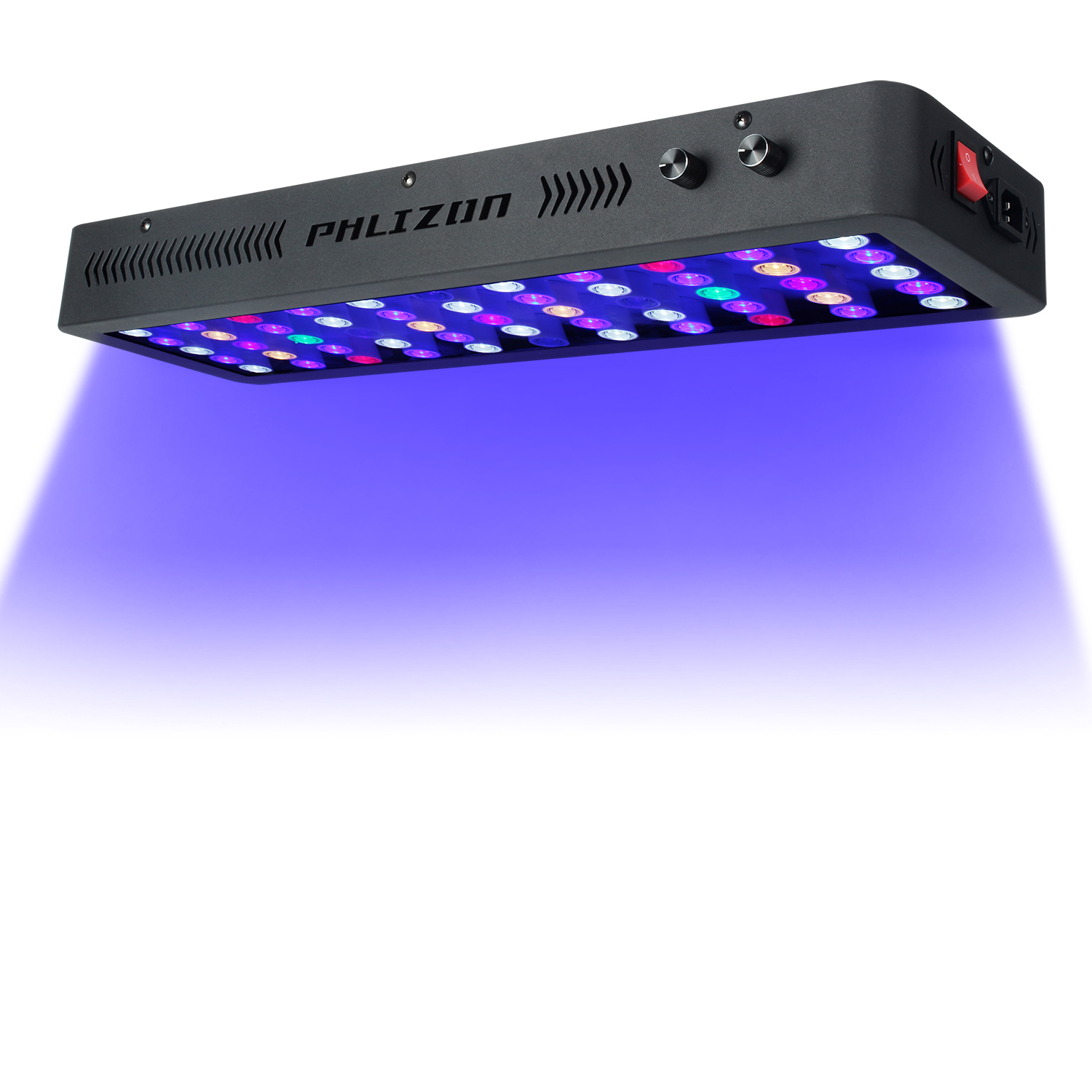
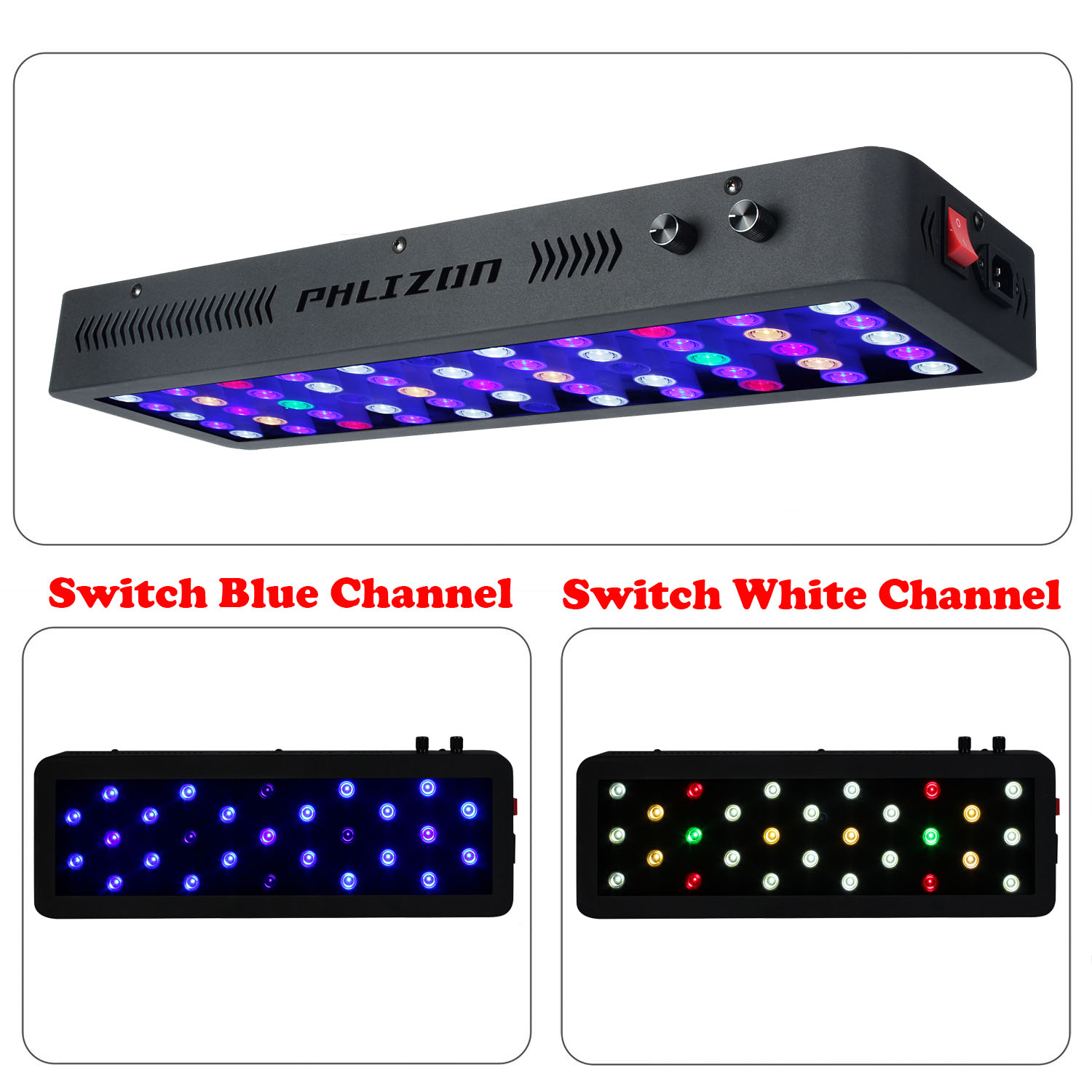
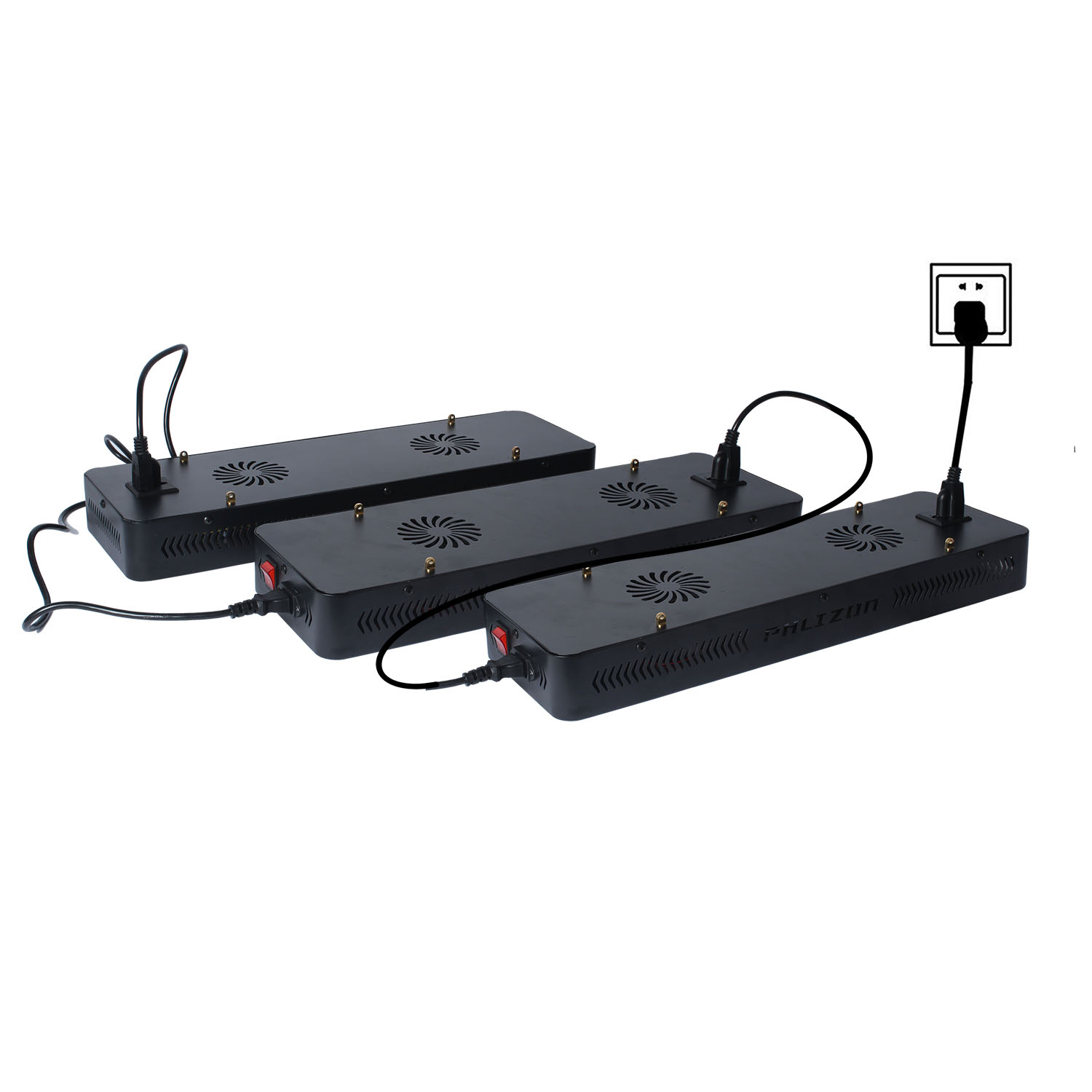
Key Features
1.The lifespan is over 50000 hours,low maintenance costs.
2.Energy conservation,saving over 80% energy than the traditional HPS.
3.High light efficiency,90% of the light will be absorbed by the aquatic plants,while just 8%-10% to the HPS.
4.Build-in cooling system,could solve the heat dissipation excellently.
5.Built-in power supply, CE approved, No setup required, just simpler and safer plugs directly into AC85V-264V, no reflector & ballast needed.
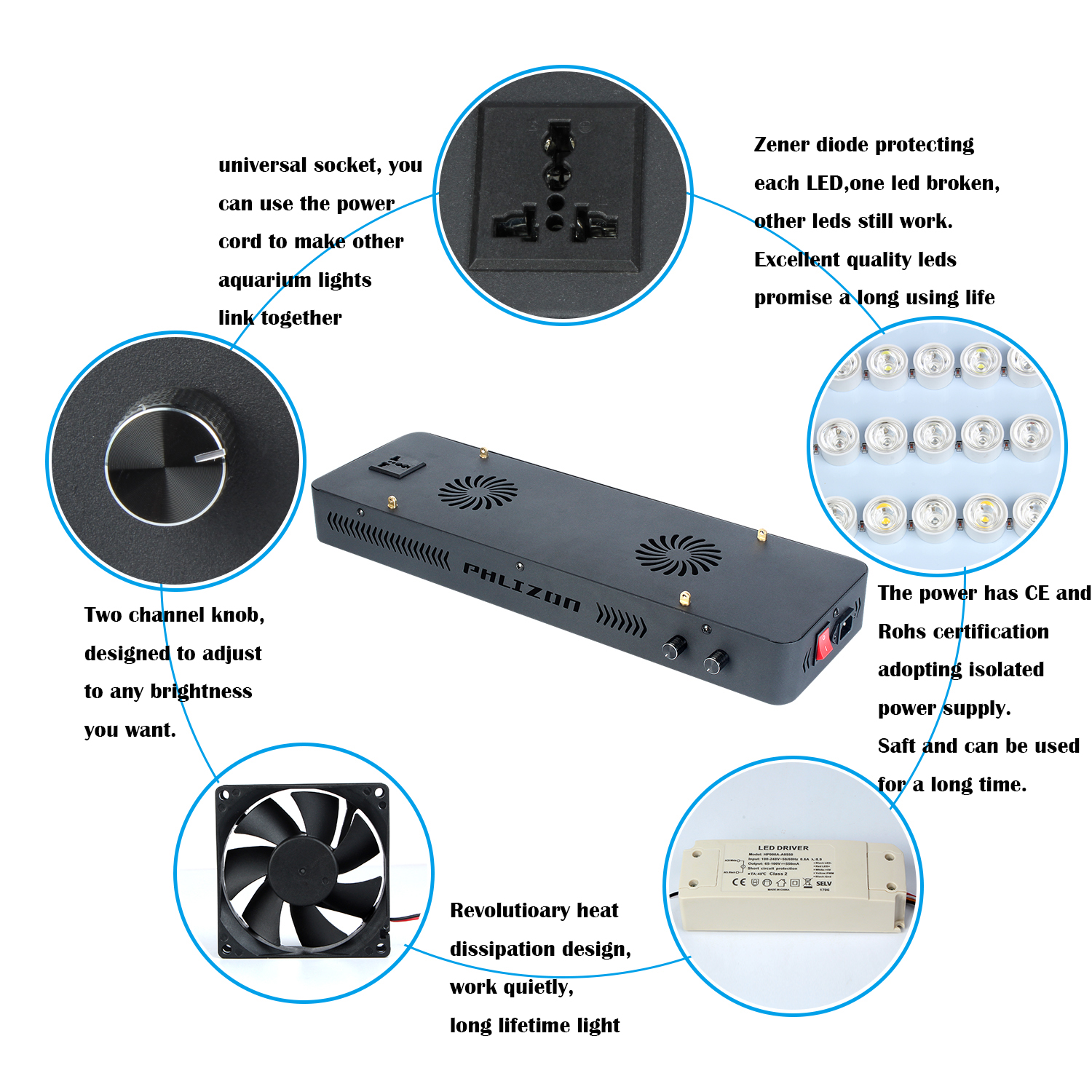
Package Include
1 X Led Aquarium Light
1 X Free Hanging Kit
1X Free Power Cord

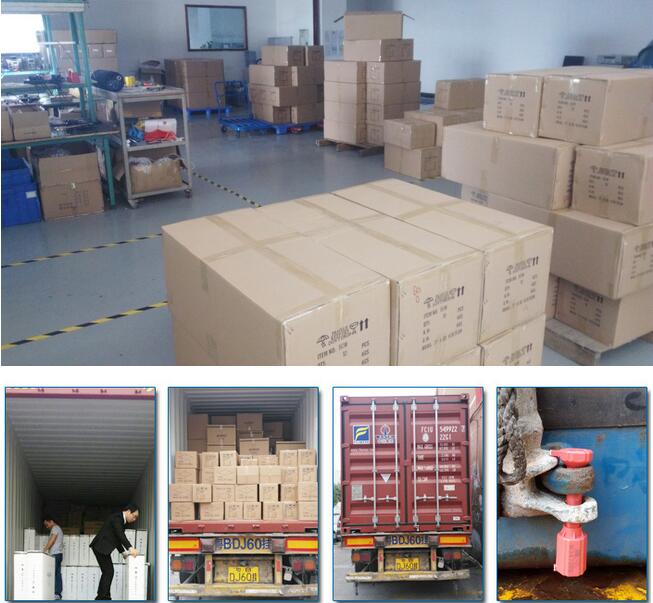
All the lamps have passed strict quality examination and are packed carefully before shipping.In order that our customers get high quality lamps,we attach importance to every details.
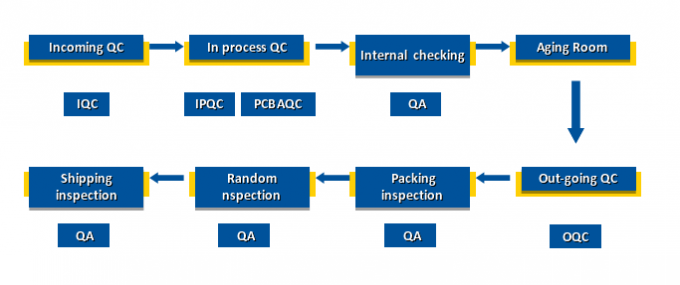
Application
1. coral reef lighting,fish tank lighting,coral reef tank lighting
2. Aquarium Lighting ,aquarium art,aquarium shop,aquarim centre
3. fish bowl lighting,fish lighting,freshwater lighting,saltwater lighting

Our Led Plant Grow Light and led aquarium lamp are popular in led market,cause its elegant outlook and its high quality and competitive price.We are eager to kick off cooperation with you, our valuable customers. Let`s work together and save the energy.
Warmly welcome to visit Philizon in Shenzhen China.
Marine Aquarium Lighting
Marine Aquarium Lighting,Marine Led Aquarium Lighting,Marine Led Lighting,Marine Aquarium Led Lighting
Shenzhen Phlizon Technology Co.,Ltd. , https://www.philizon.com
